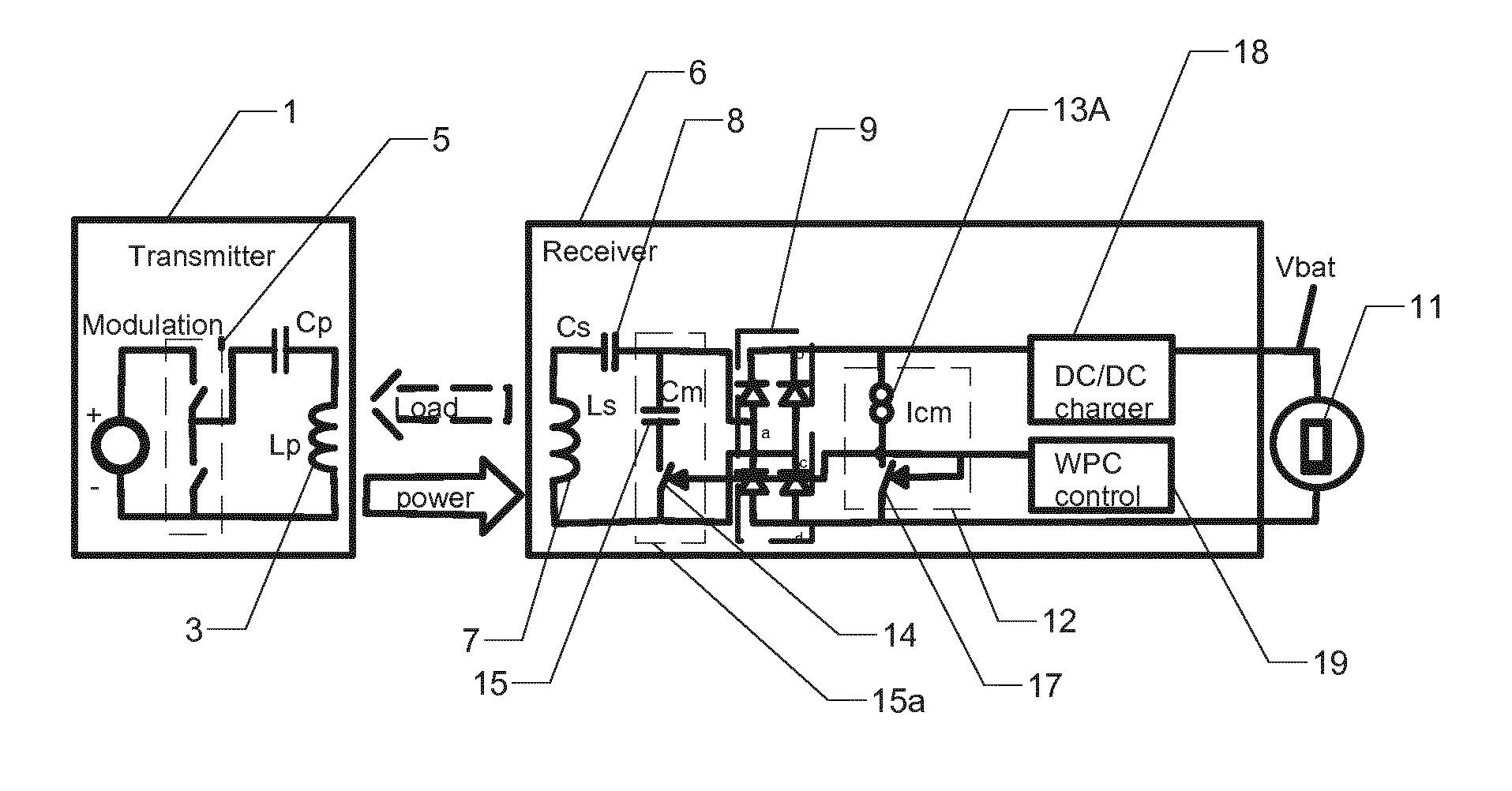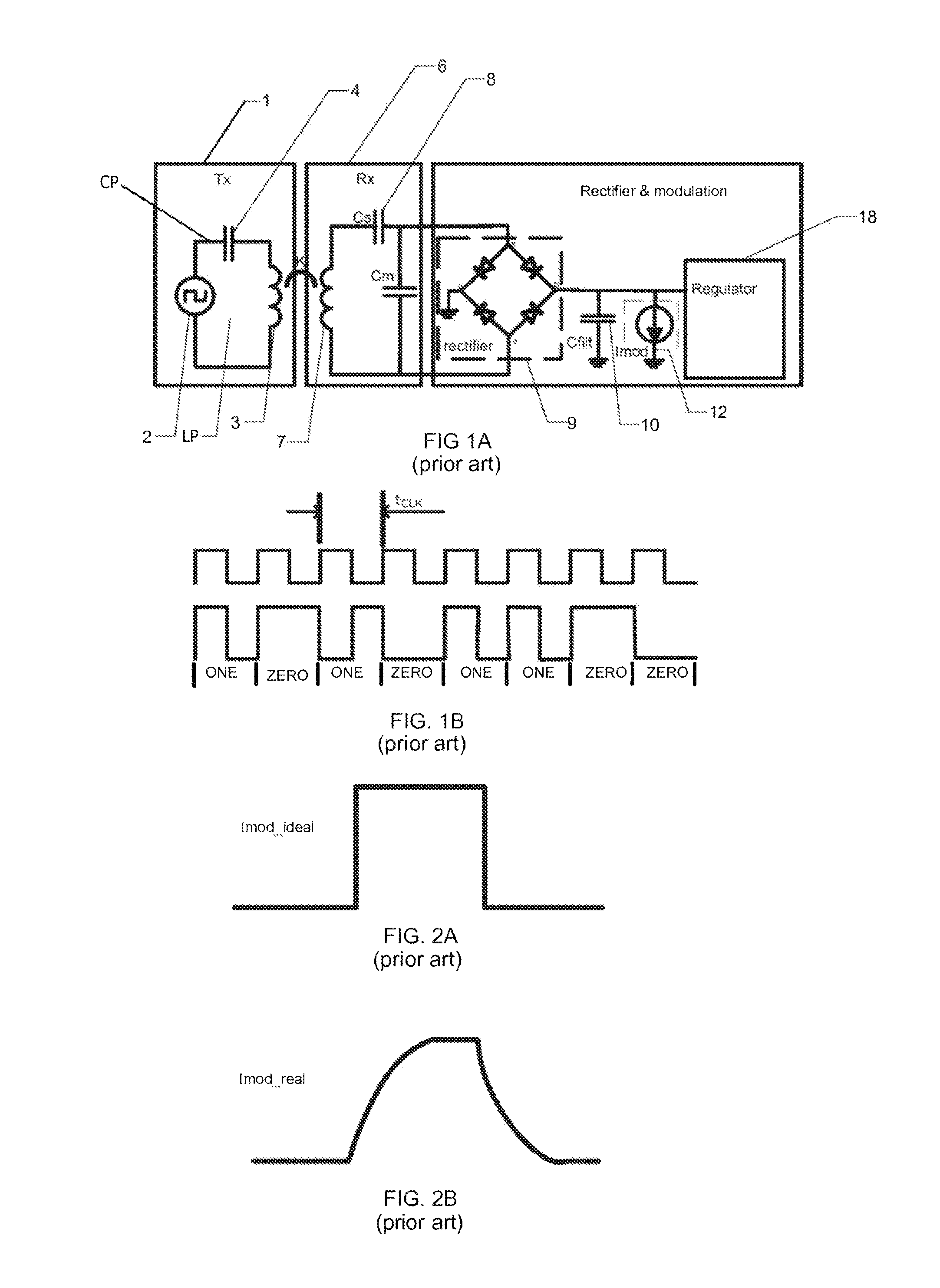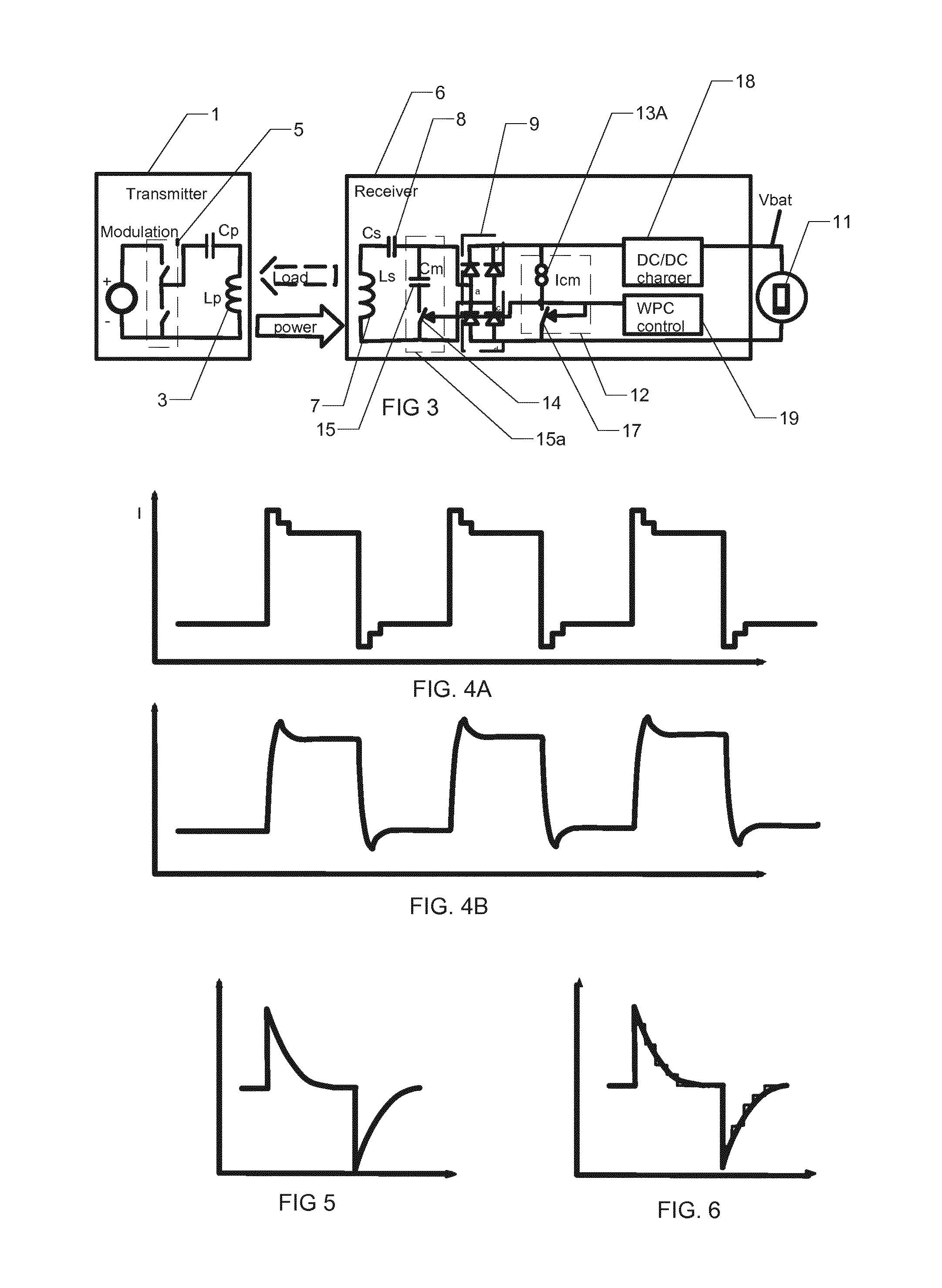Method of and Receiver for Communication During Wireless Power Transmission
a wireless power transmission and receiver technology, applied in transmission, transformers, inductances, etc., can solve the problems of reducing affecting the efficiency of transmission, so as to reduce the size of the filtering capacitor 10 and reduce the degradation of communication signals. , the effect of efficient power reception
- Summary
- Abstract
- Description
- Claims
- Application Information
AI Technical Summary
Benefits of technology
Problems solved by technology
Method used
Image
Examples
Embodiment Construction
[0030]FIG. 4A schematically illustrates an idealised pre-distorted current pulse and the resulting current pulse that flow towards the transmitter 1 (TX). FIG. 4B shows a practical form of the signal pulse seen at the secondary inductor 7. As a result it is possible to use larger filtering capacitors than the prior art arrangement, resulting in better accuracy of measurements. Moreover, should there be other sources of error within the system, such as transients in load current, the ability to produce better shaped pulses makes the system more insensitive to other types of distortion or noise.
[0031]An example of a harmful transient current flowing through capacitor is illustrated in FIG. 5. In order to compensate its impact, a pulse generating current modulator 12 is controlled by a controller 19, so that it effectively adds (superposes) a discrete replica of the transient current on top of the ideal pulse rectangular step function pulse. An example for this is shown in FIG. 6. This...
PUM
 Login to View More
Login to View More Abstract
Description
Claims
Application Information
 Login to View More
Login to View More - R&D
- Intellectual Property
- Life Sciences
- Materials
- Tech Scout
- Unparalleled Data Quality
- Higher Quality Content
- 60% Fewer Hallucinations
Browse by: Latest US Patents, China's latest patents, Technical Efficacy Thesaurus, Application Domain, Technology Topic, Popular Technical Reports.
© 2025 PatSnap. All rights reserved.Legal|Privacy policy|Modern Slavery Act Transparency Statement|Sitemap|About US| Contact US: help@patsnap.com



